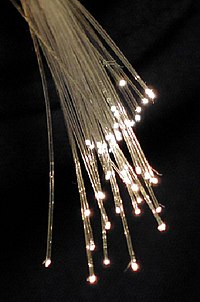
Photo from wikipedia
In this study, the widths of subsurface lateral rectangular defects were successfully gauged using laser-generated Rayleigh waves. Finite element analysis was used to simulate the interaction between Rayleigh waves and… Click to show full abstract
In this study, the widths of subsurface lateral rectangular defects were successfully gauged using laser-generated Rayleigh waves. Finite element analysis was used to simulate the interaction between Rayleigh waves and subsurface defects. The results of the simulation show that diffracted bulk modes resulting from the interaction between Rayleigh waves and subsurface defects may interact with the free surface. Modes are converted into Rayleigh waves that propagate along the surface. The arrival time of reflected mode-converted Rayleigh waves remains constant, even when the height of subsurface defects increases. However, as the depth increases, the arrival time of reflected mode-converted Rayleigh waves changes due to mode conversion caused by diffracted bulk modes interacting with the free surface. The influence of mode conversion was quantitatively analyzed and taken into account in the width measurement method for subsurface lateral defects. Experimental results are consistent with simulation results and show that Rayleigh waves induced by a pulsed line laser are sensitive to subsurface defects. Finally, the proposed method may be potentially useful for width measurements of other types of subsurface structures.
Journal Title: Journal of Applied Physics
Year Published: 2018
Link to full text (if available)
Share on Social Media: Sign Up to like & get
recommendations!